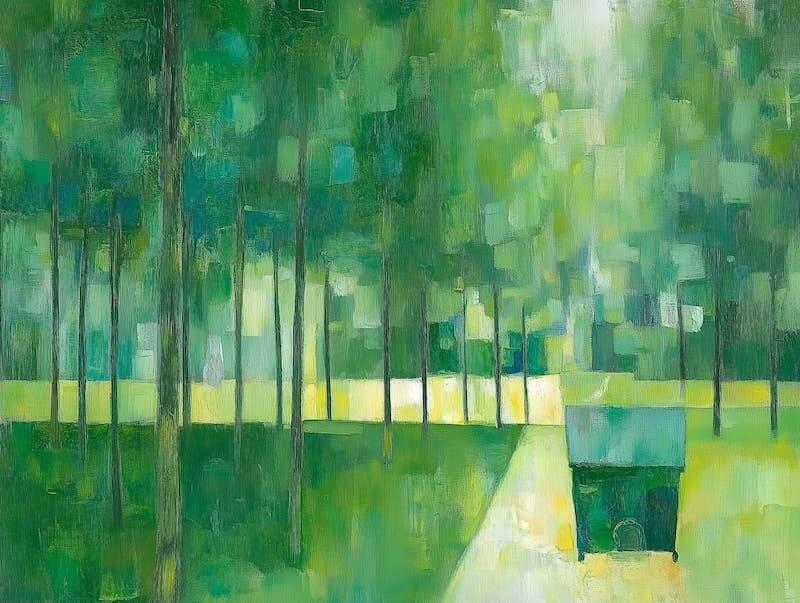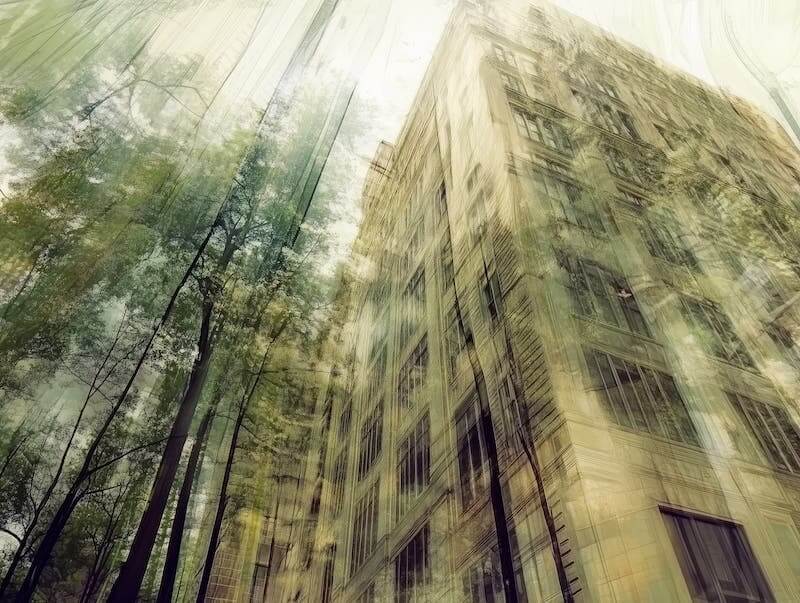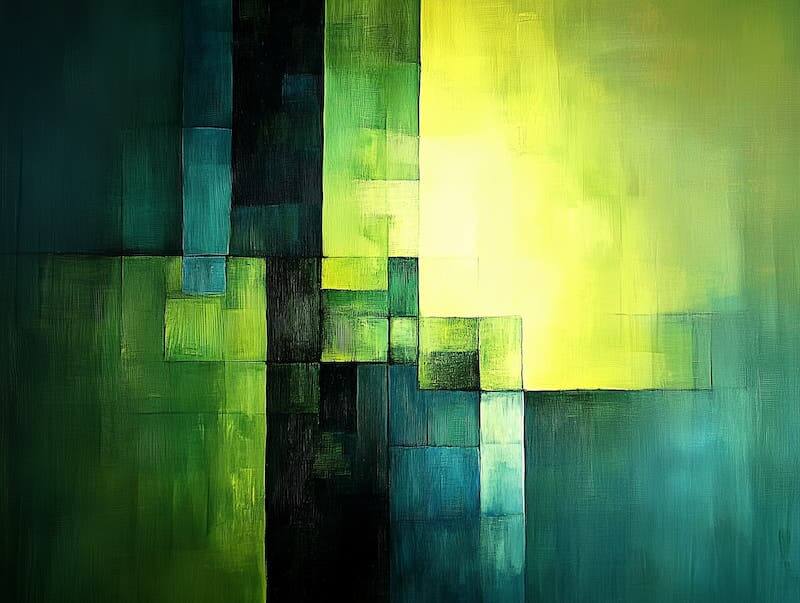Imagine stepping into a space that instantly soothes your senses—a room infused with the calming essence of nature. The color green, often linked to renewal and tranquility, has a unique ability to bring the outdoors in, transforming our homes into peaceful retreats. Whether it’s the gentle touch of sage or the bold elegance of emerald, these shades do more than transform your living space—they shape our emotions, fostering balance and vitality. But how exactly does green influence our daily lives and well-being? Let’s explore the color psychology of green.
10 Actionable Ways to Use Green Psychology in Your Life
- Decorate with Green for Calm & Focus – Use soft greens like sage or moss in bedrooms and workspaces to promote relaxation and concentration.
- Boost Energy with Vibrant Green – Incorporate brighter greens like lime or chartreuse in creative spaces, home gyms, or offices to stimulate energy and innovation.
- Choose Green for a Welcoming Home – Paint an entryway or living room in muted greens to create a warm and inviting atmosphere.
- Bring Nature Indoors – Introduce houseplants or botanical décor to improve mental well-being.
- Use Green in Meditation & Mindfulness Practices – Surround yourself with green hues or visualize green light to promote healing and emotional balance.
- Leverage Green in Healthcare & Wellness – If designing a wellness space, opt for soft greens to reduce stress and enhance feelings of renewal.
- Enhance Your Eating Habits – Green is associated with health, so serving food on green plates or using green in restaurant design can encourage healthier choices.
- Use Green in Branding & Marketing – If you own a business, use green to convey sustainability, health, or financial growth. Dark greens suggest stability, while bright greens feel fresh and innovative.
- Add Green to Your Wardrobe – Wear forest or emerald green for a sophisticated and confident look, or opt for lighter greens to appear approachable and calming.
- Create a Restorative Outdoor Space – Landscape with lush greenery, shade trees, or a green-painted patio area to enhance relaxation and connection with nature.
The Meaning of Green

Green holds a unique place in symbology through its deep association with nature—an association that runs so deep that humans have physiological responses to seeing it.
Possibly the most widespread meaning of green is nature, life, and renewal, invoking the fresh green leaves that emerge each spring.
The color green also frequently represents tranquility, health, and vitality. As a color on the cooler side of the color wheel, green is associated with relaxation and calmness. In addition, the color green prompts physical responses that reduce stress hormones, making it a favored choice in interior design for rooms like offices and bedrooms.
Hanging artwork in shades of green can transform a space, infusing it with peace and balance. Bright greens invigorate and energize, while darker greens offer stability and calm. Adding green accents like throw pillows, curtains, and houseplants to your color scheme can introduce the color without overwhelming the space.
Green in Different Cultures
Since green is a color associated with nature, many cultures make the same associations. However, the nuances differ across cultures and contexts. These are just a few examples:
- America: Green is linked to nature, health, wealth (as in dollar bills), and luck (as in four-leaf clovers). It symbolizes prosperity and environmental consciousness. However, it can also represent jealousy or inexperience (e.g., “green with envy” or “greenhorn”).
- China: Green is associated with fertility, cleanliness, harmony, and health. However, wearing a green hat can signify that a man’s wife has been unfaithful, making it a color to avoid in that context. It’s also the color of negative stock market values (red is lucky, and therefore positive).
- Japan: Green symbolizes youth, vitality, and eternal life. It is also linked to nature and good fortune.
- Islamic Cultures: Green is a sacred color in Islam, symbolizing paradise, life, and renewal. It is frequently used in Islamic art and flags.
- India: Green is associated with new beginnings, life, happiness, and prosperity. The green stripe on the Indian flag represents nature.
- Mexico & South America: In Mexico specifically, green is often associated with independence and patriotism, as seen in the Mexican flag. In most of South America, however, green is the color of death.
- Ireland: Green is a national symbol associated with luck, St. Patrick’s Day, and Irish identity. The green and orange on the flag represent Catholics and Protestants respectively, so there are some religious connotations as well.
- South Africa: Green symbolizes fertility and the land, specifically the wide expanses of fertile land on the African continent. The flag specifically avoids official color symbolism.
The History of the Color Green

The history of the color green spans centuries. It is deeply rooted in its symbolism of fertility and renewal across various ancient cultures.
In ancient Greece and Rome, green was associated with nature, fertility, and the gods of agriculture, such as Demeter and Dionysus. In the Middle Ages, green was often linked to rebirth and renewal but also to unpredictability. It was worn by lovers in art and literature, symbolizing youthful passion and growth. Green also had an association with fairies, magic, and sometimes the devil in medieval Christian symbolism. It was seen as a color of ambiguity—both life-giving and dangerous.
By the Renaissance, emerald green had become a status symbol in art and fashion, its prestige heightened by the rarity and cost of its pigments. While green plant-based dyes did exist, they were usually duller and often rapidly faded to browns or greys. To create a green fabric that was both vivid and colorfast, it first had to be dyed yellow, then with expensive imported blues.
The Industrial Revolution marked a turning point, introducing synthetic greens that broadened its use in fashion and home decor. However, early synthetic greens, such as Scheele’s Green and Paris Green, were made with toxic arsenic compounds. While these pigments produced a brilliant, long-lasting green, they also posed serious health risks, leading to cases of poisoning in both workers and consumers. Despite the dangers, green remained a fashionable color, often associated with wealth and luxury.
By the late 19th and early 20th centuries, advancements in chemistry led to safer, non-toxic green pigments, making the color more accessible and widely used. Green also took on new symbolic meanings. As cities expanded and industrialization intensified, green became a nostalgic symbol of nature and the countryside, inspiring early conservation movements.
In the mid-20th century, green became linked to financial prosperity, reinforced by the color of U.S. currency. At the same time, psychologists and designers recognized its calming properties, leading to its widespread use in public buildings, hospitals, and uniforms.
By the late 20th and early 21st centuries, green had firmly established itself as the color of environmentalism and sustainability. The rise of the eco-conscious movement, along with branding strategies emphasizing organic and “green” living, cemented its modern association with nature, health, and ethical responsibility. Today, green continues to symbolize renewal and balance while also carrying connotations of wealth, environmental awareness, and, in some contexts, ambition or envy.
The Impact of Green on Emotions and Behavior

Green continues to influence modern life, particularly how it shapes our emotions and behaviors. Beyond its aesthetic appeal, green light therapy has been shown to alleviate symptoms of seasonal affective disorder (SAD) and other conditions related to a lack of natural light.
This color, deeply tied to nature, effectively reduces anxiety and promotes emotional balance. Studies show that environments adorned with green can enhance focus and reduce stress, contributing significantly to mental well-being. Fittingly, its complementary color has the opposite physiological effect—red increases heart rate.
Green is often perceived as a relaxing color, with its motivational properties varying among individuals. While some associate green with relaxation and safety, others find it motivating, suggesting a strong personal and cultural influence on emotional responses to colors.
Moreover, softer green hues in home decor create a serene atmosphere, reinforcing feelings of safety and security. Even brief exposure to greenery offers restorative effects, uplifting moods and fostering a sense of rejuvenation.
Ultimately, green beautifies spaces and profoundly impacts human emotional and psychological health.
Shades and Uses of Green

A key part of botanical palettes, green is a versatile color offering a wide range of shades, each with unique characteristics and connotations. From the light, refreshing tones of mint to the deep, grounding hues of forest green, this color can be adapted to suit various design needs and preferences. In an interior design color scheme, green can serve as a dominant color, an accent, or a background, seamlessly blending with neutrals, bolds, and pastels.
Lighter shades of green, such as sage or mint, evoke freshness and tranquility, making them ideal for creating a calming atmosphere like the kind you’d want in a doctor’s office.
- Sage Green – A soft, muted green with grey undertones, often linked to tranquility, balance, and mindfulness. This shade has gained popularity in wellness spaces, Scandinavian color palettes, and minimalist interior design.
- Lime Green – A bright, energetic shade that exudes freshness, creativity, and enthusiasm. Frequently used in marketing and advertising to grab attention, it is also associated with youthfulness and innovation.
- Mint Green – A light, pastel green that suggests freshness and cleanliness. Often used in healthcare, spas, and beauty branding, it has a soothing and rejuvenating effect.
- Teal and Aqua – Shades of green blended with blue, these colors evoke feelings of clarity, sophistication, and relaxation. They are commonly seen in technology, corporate branding, and coastal-inspired designs.
Darker shades, like olive or forest green, impart stability and sophistication, perfect for adding depth and elegance to a space.
- Emerald Green – A rich, jewel-toned shade often linked to luxury, sophistication, and prosperity. It has historically symbolized wealth and status, frequently appearing in fine art, fashion, and high-end branding.
- Forest Green – A deep, earthy green associated with stability, endurance, and nature. Often used in outdoor and environmental branding, it conveys reliability and a strong connection to the natural world.
- Olive Green – A muted, slightly yellow-green tone that symbolizes peace, wisdom, and resilience. It has military connotations due to its use in camouflage but is also popular in interior design for its grounded, neutral appeal. For example, it’s a popular shade in the desert modern style.
In interior design, shades like sage, olive, and mint are used to create calming environments in homes, offices, and wellness spaces. These effects are enhanced by incorporating live greenery, which has even more potent effects on human psychology.
Green is used in non-residential spaces, such as hospitals and medical settings, for its stress-reducing effects. Companies focused on health, sustainability, and finance frequently use green to establish trust and eco-consciousness. Brighter greens attract attention and energize, while darker tones suggest stability and trust.
Whether you’re aiming to promote relaxation, stimulate growth, or simply add a touch of natural beauty, green is a color that can help you achieve your goals.
The Beauty and Usage of the Color Green
Green is more than a color; it’s a gateway to tranquility and health. Blending shades from mint to emerald with other colors that go with green allows you to cultivate a serene environment that mirrors the natural world. Green’s influence on our emotions and behaviors is profound, promoting calmness and rejuvenation. Whether through home decor, architecture, or business branding, incorporating green can impact environments and experiences, making it a vital element in design that encourages relaxation and well-being.




